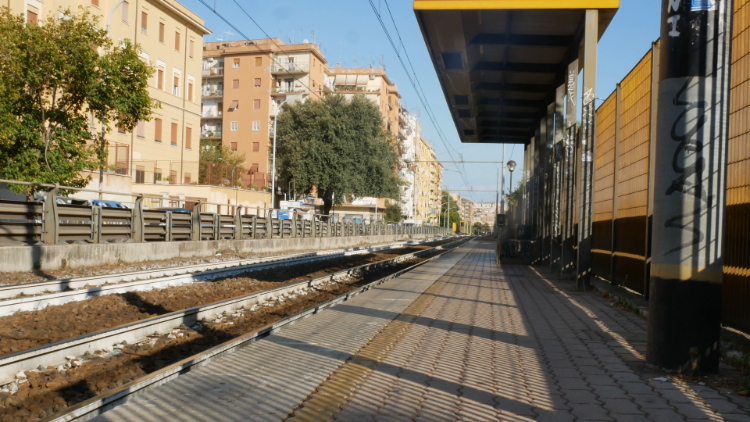
A story of migrant integration
By Alessandro Guarasci
There are over 2.5 million migrants working in Italy. Most of them work in hotels and restaurants, agriculture and construction, and many of them are caregivers. Theirs are stories of integration, of a constant and precious contribution to the life of the country. Still, many Italians don’t realize the added value they offer. You can find them everywhere. Sometimes even next door.
Admon from Syria: caregiver to the elderly
Admon Alhabib is 20 years old. He left Al-Qaryatayn, near Homs in Syria, in 2016, after rebel troops and militants loyal to President Bashar al-Assad razed his town to the ground. His father died of a heart attack while fleeing the city. Now Admon studies and works in Rome. In the evening, he attends a school and during the day, he assists two elderly people. He also does volunteer work together with the Community of Sant'Egidio. Every weekend he visits residents at the Santa Margherita retirement home in the San Saba district of Rome. This gives Admon the opportunity to meet people who have seen and experienced the growth of Italy from the post-war period to the present day.
Admon arrived in Italy on his own initiative, through the humanitarian corridors of the Community of Sant'Egidio with the Federation of Evangelical Churches in Italy, the Waldensian Church and the Caritas branch of the Italian Bishops’ Conference. Almost 2,500 people have arrived in Italy since February 2016, many of them fleeing the wars in Syria and the Horn of Africa.
The humanitarian corridors were set up to avoid refugees attempting to cross the Mediterranean by boat. This route has left hundred dead, many of them children. They also help prevent human trafficking. Mostly, they assist vulnerable people (victims of persecution, torture and violence, families with children, the elderly, the sick, the disabled) to obtain legal entry into Italy with a humanitarian visa and, therefore, the possibility to apply for asylum later.
Monika from Bangladesh: local tour guide
Monika Islam introduces visitors to the most beautiful, characteristic, and most multicultural corners of Rome. She works with an association called “Viaggi Solidali”. ACRA, “Viaggi Solidali” and Oxfam Italia are responsible for developing the EU “Migrantour” Network. This initiative allows European citizens, tourists and students, to discover the secrets of European cities through the eyes of migrants. Secrets that not even the locals know. So far, the project involves five Italian cities (Turin, Milan, Genoa, Florence and Rome) and four other European cities (Marseille, Paris, Valencia, and Lisbon). Since 2010, thousands of people have taken part in these walks: secondary school pupils, curious citizens, foreign tourists, neighbourhood residents, groups and associations.
Monika came to Italy from Bangladesh as a child. She is one of the so-called "new Italians". Her integration process has been total, and she takes full advantage of her knowledge of several cultures. We followed her on a tour with some students of a U.S. university in one of the most multicultural and multi-ethnic neighborhoods of Rome: Tor Pignattara. Different traditions, dishes, colors, religions, and smells blend here in a wonderful way. Tor Pignattara has been a popular residential area since before the Second World War. This is the district of murals: colours that reflect the kaleidoscope of cultures that find their home here. The main elementary school, the "Carlo Pisacane", for example, is a true model of integration.
Soumaila from Mali: cultural mediator
Soumaila Diwara survived one of the many shipwrecks that often cause migrant journeys between Libya and Italy to end in tragedy. Now he writes books, acts as a cultural mediator, and tells his story in schools. The “Finestre” project encourages meetings with migrants and refugees in schools, to foster interreligious dialogue, community building, and social creativity. In this context, the “foreigner” is no longer perceived as an outsider, a problem or a threat, but as someone who brings human and cultural richness.
After getting his law degree in Bamako, Soumaila entered politics. He joined the opposition party "Solidarité Africaine pour la Démocratie et l'Indépendance" (SADI). In 2012, he had to flee Mali and followed the current migration route from Libya, crossing the Mediterranean in a rubber dinghy. Shipwrecked, an Italian navy patrol boat rescued him and brought him to Italy. In 2014, he was granted political asylum.
Today, Soumaila is completely integrated into Italian society. With young people especially, he shares the stories of those who are forced to flee religious or political persecution.
He and those like him know that the key to overcoming fear and distrust is through understanding and personal encounter.
Thank you for reading our article. You can keep up-to-date by subscribing to our daily newsletter. Just click here









